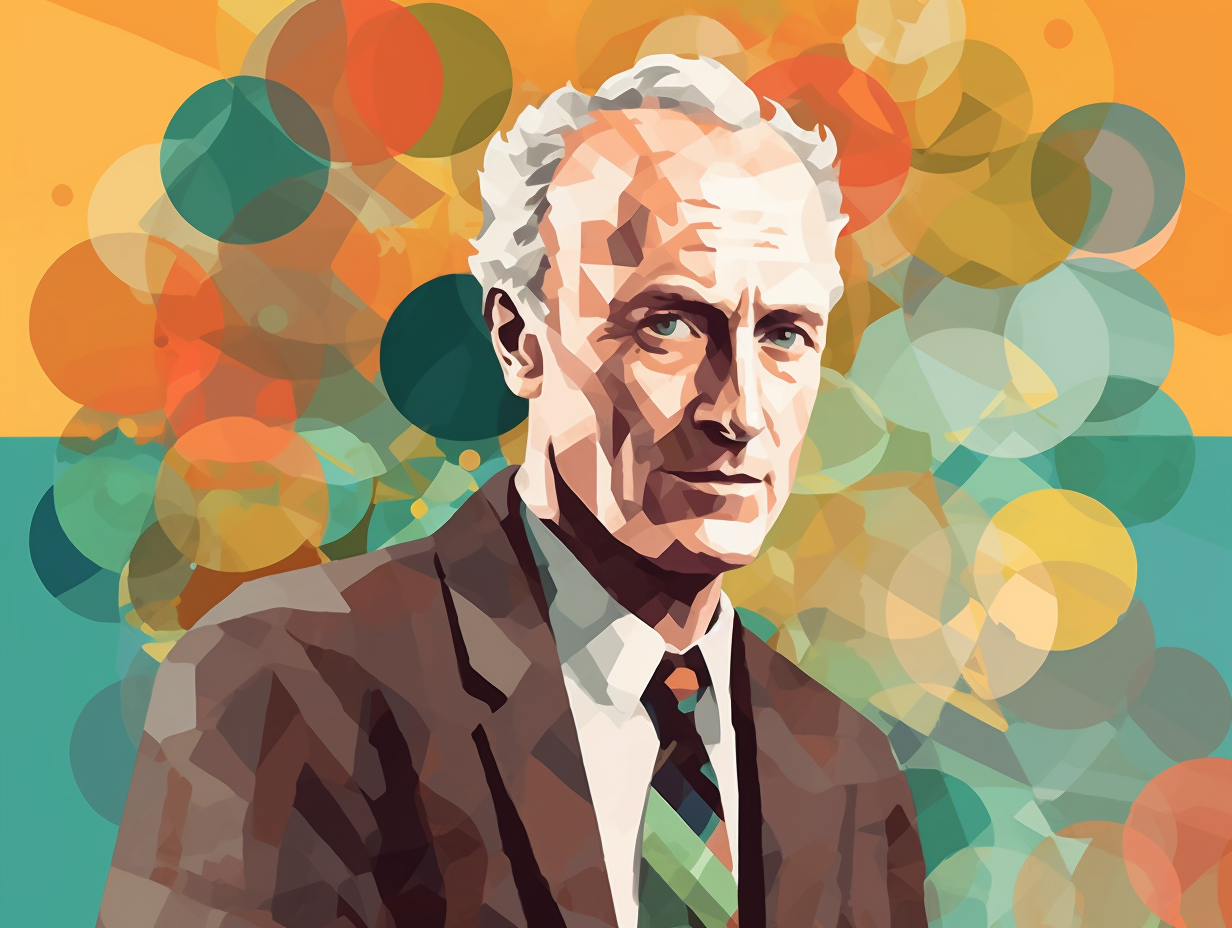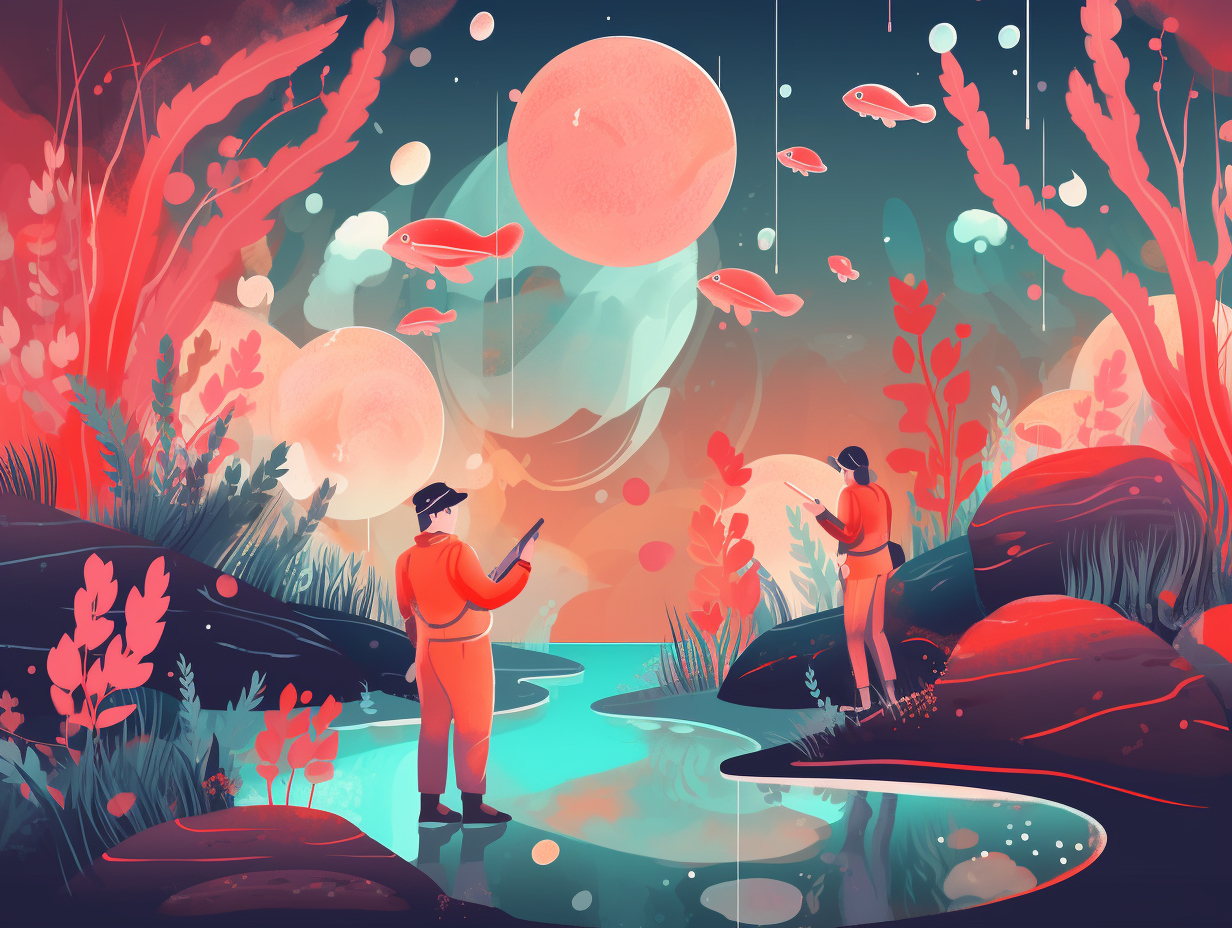Discover the DNA Code: Top 12 Fun and Fascinating Facts About Francis Crick

1. WWII Mine-Designing Maestro
Before he was splitting genes and DNA like a molecular Martin Scorsese, Francis Crick was blowing things up under water as a World War II mine-designing maestro: In fact, during the war, Crick interrupted his scientific career to work for the Admiralty Research Laboratory, where he designed a new mine that was highly effective against German minesweepers, before eventually winning the Nobel Prize in Physiology or Medicine in 1962 for his groundbreaking discoveries in molecular biology.
Source => en.wikipedia.org
2. DNA Picasso and Caricature King
Who needs Picasso when you've got a DNA Picasso: Francis Crick, the molecular biology maestro, dabbled in the delicate art of caricature, tickling the funny bones of his Cambridge University colleagues by crafting hilarious drawings for their Christmas cards. His pièce de résistance immortalized his partner-in-crime, James Watson, as a DNA-digging Neanderthal, all while Crick's artistic prowess secretly aided his visualization of complex molecular magnum opuses.
Source => profiles.nlm.nih.gov

Discover the surprising truth about our DNA similarities! 🧬 Just 0.1% genetic difference holds the key to unlocking personalized treatments for illnesses. Explore the wonders of our genetic code now! ✨
=> Fun Facts about Dna
3. The Eagle Pub's DNA Victory Toast
In a twist straight out of a crime novel, the elusive duo Watson and Crick cracked the code without lifting a finger - and a merry toast declared their victory at The Eagle pub: The discovery of DNA's structure was, in fact, a result of collective genius from scientists at Cambridge's Cavendish Laboratory, with Watson and Crick playing the role of theorists, while others like Rosalind Franklin and June Broomhead provided the experimental data that led to the breakthrough.
Source => cam.ac.uk
4. DNA Declaration Letter Sells for Millions
Who says snail mail is dead? Not when it's a priceless piece of history written by a DNA maestro: Francis Crick's letter to his 12-year-old son, detailing the discovery of DNA's double helix structure and the secret to "life coming from life", was sold for a whopping $5.3 million (£3.45 million) at a New York City auction. The proceeds were used to boost scientific research, with the Salk Institute for Biological Studies and the Francis Crick Institute in London benefiting from this monumental post.
Source => theguardian.com

5. Rosalind Franklin: Unsung Double Helix Hero
In the game of DNA discovery, some players drew the short helix: Francis Crick, James Watson, and Maurice Wilkins won the Nobel Prize in Physiology or Medicine in 1962 for elucidating the structure of DNA, but the fourth member of this double-helix detective squad, Rosalind Franklin, went largely unsung – and it was her X-ray diffraction pattern, Photo 51, that truly cracked the case!
Source => embryo.asu.edu
6. The Secret Mastermind of DNA Discovery
Back in the day, when secrets were as twisted as a double helix and scientists had more drama than a season of "House of Cards", an unsung hero was pulling the strings of the genetic world: Francis Crick, together with James Watson and Maurice Wilkins, received the 1962 Nobel Prize in Physiology or Medicine for determining the structure of DNA, but the real twist in this molecular tale is that Rosalind Franklin's crucial role in this discovery remained virtually unknown for years. It was her elusive X-ray diffraction photograph, Photo 51, that cracked the case for Crick and Watson, but sadly, recognition couldn't find its way into her DNA until long after her passing.
Source => embryo.asu.edu
7. Crick's Psychedelic Brainstorming
Oh to be a fly on the wall of Francis Crick's acid trips, where DNA might've danced as double helixes and groovy chromosomes: The co-founder of modern genetics not only supported cannabis legalization through the group Soma, he also dabbled in small doses of LSD as a mental liberator for brainstorming sessions - though rest assured, his Nobel-winning discovery of DNA's structure was strictly a sober affair.
Source => maps.org
8. The Original Predictor of "Sequel" Culture
Way before Twitter got us chirping about DNA and evolving our vocabularies, Francis Crick was the original predictor of "sequel" culture: In a 1957 lecture, he foresaw that scientists would study evolution by comparing sequences, which has since become a major tool in understanding the relationships between organisms and the evolutionary history of life on Earth.
Source => ncbi.nlm.nih.gov
9. DNA Discoverers Win Nobel Prize
When life hands you DNA, make proteins: Francis Crick, along with James Watson and Maurice Wilkins, cracked the primordial code in 1962 to uncover the molecular structure of DNA, a biological enigma that would pave the way for understanding the sequence of amino acids in a protein and bagging them a Nobel Prize in Physiology or Medicine.
Source => nobelprize.org

10. Science, Humor, and the Astonishing Hypothesis
Who says science and humor don't mix? Francis Crick would have made a brainy stand-up comic: Perhaps best known for his co-discovery of the DNA structure, he later shifted his keen intellect toward investigating the human brain and the enigma that is our consciousness. This led him to co-author a book called "The Astonishing Hypothesis," where he audaciously suggested that all aspects of human consciousness can be attributed to the complex workings of neurons in the brain. Talk about mind-blowing humor!
Source => profiles.nlm.nih.gov
11. The Legendary Helix-Detecting Duo
Before Watson and Crick became an inseparable crime-fighting duo, they dabbled in a little helix-detecting: Francis Crick, alongside James Watson, discovered the iconic double helix structure of DNA, opening doors to groundbreaking advancements in areas like gene therapy and biotechnology, and earning him the coveted 1962 Nobel Prize in Physiology or Medicine.
Source => blog.sciencemuseum.org.uk
12. Crick Institute's Study on COVID-19 Vulnerability
It seems that what doesn't kill you makes you... a perfect study subject for unraveling the mysteries of COVID-19: The Francis Crick Institute in London, known for the esteemed researcher who shared its name, is utilizing its "Legacy Study" to analyze over 400,000 coronavirus samples and assess factors like age, sex, ethnicity, and medical histories, in order to understand the varying vulnerability to SARS-CoV-2 infection.
Source => crick.ac.uk
Related Fun Facts




















